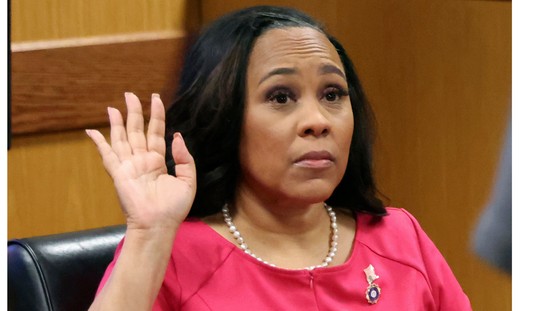Here's my first admission: I'm a geek. In school, I was the bookish girl who kept her head down during class and barely talked with other students. A bit of a nerd, geek or whatever other slang word would fit at the time. A voracious reader, I spent most lunch hours during my eighth-grade year reading in the library. It was easier to go there than it was to endure the process of trying to find someone to sit with in the cafeteria.
I come from a long line of geeks. My mother, Jackie Gingrich, had graduated from Auburn University in the 1950s with a math degree in less than three years. More often than not, she had been the only female in her math classes. My father, Newt Gingrich, topped the list for Scientific American's biggest geek in the Republican primary.
Therefore, I have some affinity for the characters on "The Big Bang Theory," a comedy about California Institute of Technology (Caltech). I love watching the geeks win.
This week they won big!
On Aug. 6, at 1:31 a.m. EDT, while most of America was sleeping, dozens of people at NASA's Jet Propulsion Lab, JPL, in Pasadena, Calif., were cheering in celebration of a long-anticipated victory: The successful entry, descent and landing -- EDL -- of the rover "Curiosity" at Gale Crater on Mars. There were high-fives, hugs and even tears shed by those who had poured their hearts, souls and dreams into the more-than-eight-year project.
After guiding the rover from its launch last Nov. 26 from Cape Canaveral in Florida across 352-million miles of space over 36 weeks, the JPL team had to wait 14 minutes more before it learned of Curiosity's success. It takes a while for transmission from Mars to Earth.
This is an enormous victory for JPL and the NASA team. If you've ever been intrigued by space, transformers or powered flight, the entry video is a must-see. While millions of people have spent much of this week talking about and watching the Olympic athletes' gymnastic routines in London, they should also be talking about the planning, tracking and execution of the EDL.
Recommended
EDL, dubbed the seven minutes of terror by JPL prior to the landing, was a routine that highlighted the spectacular planning and mathematical calculations contained in the more than 500,000 lines of code that controlled the process. During those seven minutes, the craft slowed from 13,000 mph to land with precision control.
Like some futuristic vision, EDL included six configurations of the craft, 76 pyrotechnic devices and a parachute 160 feet long and 52 feet in diameter that was attached by 800 suspension lines.
After a guided entry into Mars' atmosphere, the spacecraft used the parachute to slow its descent, followed by the firing of retrorockets to slow it even more. EDL ended with the craft breaking into two pieces; a sky crane on the top piece used a tether to lower the rover onto the surface of Mars. It was the first time that this idea had been used for a space landing.
Sounds incredible - and it was.
After the successful landing, the seven minutes of terror was renamed the seven minutes of triumph.
During its 98-week (that's one Martian year) mission, Curiosity is expected not only to collect samples, but to also test the samples in its internal lab and then send whatever data it finds back to Earth.
This week's space triumph marks the culmination of an effort that began in 2004, when NASA called for proposals on the rover's scientific instruments. According to the JPL website, the scientific goal of the mission is to "explore and quantitatively assess a local region on Mars' surface as a potential habitat for life, past or present."
OK, so here is my second admission: Yes, I know that not everyone involved in the JPL/ NASA project is a geek, but I still love the idea of geeks winning. For everyone who is intrigued by space, by exploration and by pyrotechnic devices, this is a big win and a reason to cheer WHOOP, WHOOP!

























Join the conversation as a VIP Member